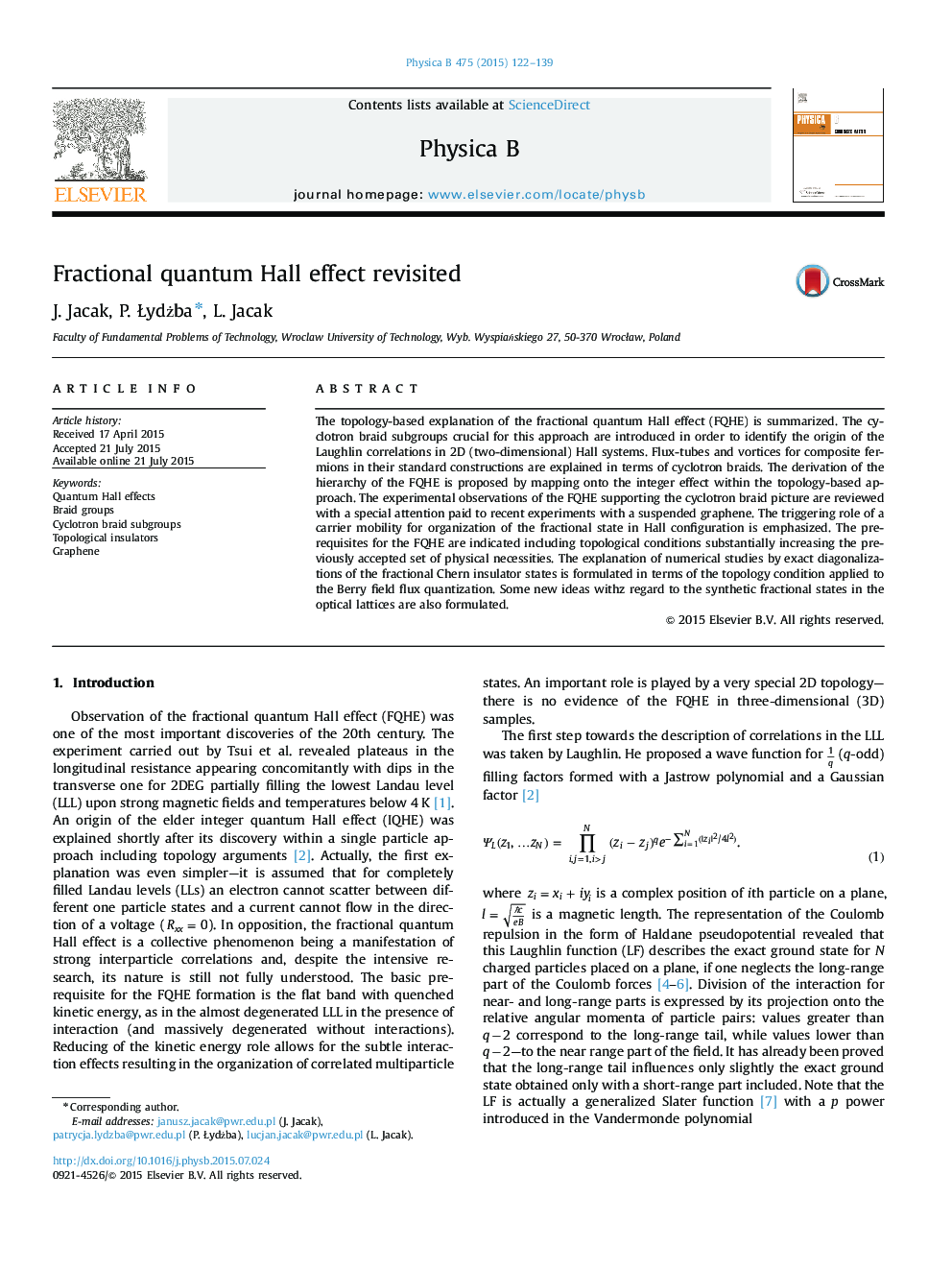| Article ID | Journal | Published Year | Pages | File Type |
|---|---|---|---|---|
| 1808802 | Physica B: Condensed Matter | 2015 | 18 Pages |
Abstract
The topology-based explanation of the fractional quantum Hall effect (FQHE) is summarized. The cyclotron braid subgroups crucial for this approach are introduced in order to identify the origin of the Laughlin correlations in 2D (two-dimensional) Hall systems. Flux-tubes and vortices for composite fermions in their standard constructions are explained in terms of cyclotron braids. The derivation of the hierarchy of the FQHE is proposed by mapping onto the integer effect within the topology-based approach. The experimental observations of the FQHE supporting the cyclotron braid picture are reviewed with a special attention paid to recent experiments with a suspended graphene. The triggering role of a carrier mobility for organization of the fractional state in Hall configuration is emphasized. The prerequisites for the FQHE are indicated including topological conditions substantially increasing the previously accepted set of physical necessities. The explanation of numerical studies by exact diagonalizations of the fractional Chern insulator states is formulated in terms of the topology condition applied to the Berry field flux quantization. Some new ideas withz regard to the synthetic fractional states in the optical lattices are also formulated.
Related Topics
Physical Sciences and Engineering
Physics and Astronomy
Condensed Matter Physics
Authors
J. Jacak, P. Åydżba, L. Jacak,
